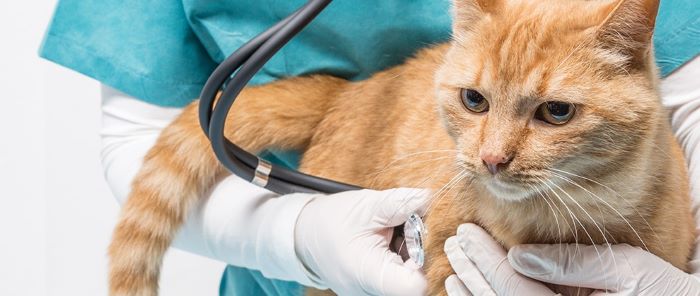Cats afflicted with cardiomyopathy suffer from impaired circulation, which in turn can lead to a condition known as arterial thromboembolism.
This disorder is characterized by large blood clots that form within the left side of the heart and pass into circulation, only to lodge within one or more blood vessels within the body, usually at the point where the large aorta divides into two smaller arteries that supply the hindlimbs.
When such a clot restricts blood flow to the back legs, pronounced hindlimb weakness results. The hind paws might feel cold to the touch, and the clear nails might take on a bluish hue. As the muscles of the hind end are deprived of blood and oxygen, they become firm and painful to the touch.
Diagnosis of arterial thromboembolism is based on clinical signs and physical exam findings. Ultrasound can be used to assess the condition of the heart and to identify thrombi still within the organ. A total absence or partial reduction in hind limb pulse is diagnostic of a thromboembolism as well.
Treatment for arterial thromboembolism is difficult at best. Surgery is usually unrewarding, and the existing heart disease in these cats makes them high anesthesia risks. Medical therapy can be somewhat effective if instituted within a few hours of onset.
This involves administering drugs designed to dissolve the blood clot, prevent further thrombi from developing, and restore normal blood flow.
Prognosis for a full recovery is guarded, simply because of the preexisting heart disease and because of chronic pain and tissue damage caused by the temporary loss of oxygen.
However, with physical therapy and attentive nursing care, many cats experience at least partial functional restoration in 1 or 2 months. Obviously, management of the preexisting cardiomyopathy is necessary as well.





